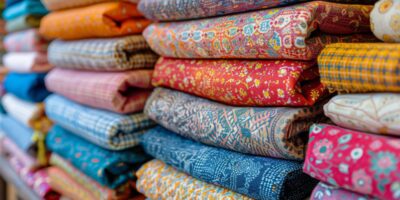
In the Middle East and North Africa (MENA) region, a technological revolution is taking the fashion industry by storm. As digital advancements permeate every sector, the fashion world in this culturally rich and diverse region is experiencing unprecedented transformation. This integration of technology is reshaping how garments are designed, marketed, and sold, making fashion more accessible, sustainable, and aligned with global trends. This article explores the various ways in which technology is influencing the MENA fashion industry, from design and production to sales and consumer interaction.
Technological Innovations in Design and Manufacturing
3D Design and Virtual Prototyping: Cutting-edge software now allows designers in the MENA region to create and modify their designs in virtual environments. 3D design tools enable designers to see a garment in three dimensions without creating a physical prototype, reducing material waste and speeding up the design process. This technology not only streamlines development but also allows designers to experiment more freely with complex patterns and structures, encouraging a bolder approach to fashion design.
Smart Fabrics and Wearables: Innovations in material science have led to the development of fabrics that can change color based on temperature, monitor health metrics, or even harvest energy from the wearer’s body. MENA designers are tapping into this trend to produce clothing that marries traditional aesthetics with futuristic functionality, appealing to the tech-savvy youth of the region.
Revolutionizing Sales and Marketing
E-Commerce Platforms: Online shopping has become a staple, and local fashion brands are increasingly investing in robust e-commerce solutions to reach a broader audience. Websites and mobile apps with features like virtual try-ons, powered by augmented reality (AR), allow customers to see how clothes would look on them without physically trying them on. This technology is particularly significant in the context of the COVID-19 pandemic, where safety concerns have amplified the need for such contactless solutions.
Social Media and Digital Marketing: In the MENA region, social media platforms like Instagram and Snapchat are immensely popular. Fashion brands leverage these platforms for marketing, using influencers to showcase their latest collections and reach millions of potential customers. Advanced analytics tools help brands track engagement and sales, refining marketing strategies in real-time to maximize effectiveness.
Enhancing Customer Experience
AI-Powered Personalization: Artificial Intelligence (AI) is at the forefront of personalizing the customer shopping experience. AI algorithms analyze customer data and purchasing habits to offer personalized recommendations, much like the experience one would receive in a high-end boutique. This level of personalized service can significantly enhance customer satisfaction and loyalty.
Virtual Fitting Rooms: Several startups in the region are working on virtual fitting room technology, which allows customers to create a digital avatar based on their measurements. Customers can try on different outfits on their avatars, which helps them make better purchasing decisions and reduces the rate of returns, a significant cost in the fashion industry.
Sustainable Practices and Circular Fashion
Technology also plays a crucial role in promoting sustainability in fashion—a growing concern among global consumers.
Fabric Recycling Technologies: New technologies are being developed to recycle fabric at a more granular level, which can then be used to create new garments. This approach supports the circular economy and is increasingly popular among eco-conscious consumers.
Blockchain for Traceability: Blockchain technology is being employed to increase transparency in the fashion supply chain. Consumers can track the journey of a garment from raw material to final product, ensuring that the products they purchase are ethically sourced and produced.
Overcoming Challenges
Despite these advancements, the integration of technology in the MENA fashion industry faces challenges such as high initial costs, resistance from traditionalists, and the need for skills training to manage new technologies. Overcoming these obstacles requires strategic investments, education, and creating an ecosystem that supports technological innovation in fashion.
Conclusion
Technology is undeniably reshaping the fashion industry in the MENA region, driving it towards a future where fashion is more innovative, sustainable, and inclusive. As the region continues to embrace these technological changes, it not only keeps pace with global fashion capitals but also carves out its own unique identity in the world of fashion tech. This transformation, while still at various stages across different countries, points towards a vibrant future for the fusion of tradition and technology in MENA fashion.














